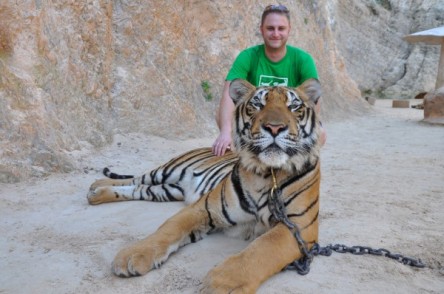So I’ve been taking care of wildlife for over 4 years and recently I decided to become a small animal practitioner. Why? Well, here is the story….
A trip to Jakarta earlier this year let me meet an inspiring vet who has been practicing as an exotic pet vet for a few years. We both share a strong passion for wildlife and conservation. She then advised me to start practicing as an exotic pet vet too and help illegal wildlife trade victims. If you know how much I am into wildlife conservation, you’d also know that I would be against this idea. Well, I did at first because I believed doing this would encourage exotic pet lovers out there to keep more wildlife at their homes, thus would create more demands for wildlife trade, and there would be more illegal wildlife trade victims. So I shouted out and explained my opinions. She understood of course, as it was her first thought as well, but what she said next really opened my eyes and changed my point of view. She asked me a few questions:
- Do they, exotic pet owners, consider if there are any exotic pet vets practicing in their town before buying exotic pets? No.
- Do they stop buying wildlife just because there isn’t any exotic pet vet available in their town? No. Almost everyone thinks a vet is capable of treating all kind of animals.
- So what made them buy exotic pets? 1 hobby, 2 prestige. The availability of an exotic pet vet is not in their reasons to keep wildlife as pets.
The fact is, these exotic pet owners don’t really care about the availability of exotic pet vets nearby. The existence of exotic pet vet doesn’t encourage pet owners to buy more wildlife. Then what happens when the exotic pets fall sick? Here is a possible scenario:
1. They will bring the exotic pet to a nearby vet, assuming every vet knows everything about all kinds of animals: furry pets, feathery pets, scaly pets, even hairy rhinos. Unfortunately this is not true, since most clinics are familiar with only dogs and cat. Then the vet will say sorry I don’t know, so the pet owners would start complaining and the exotic pet is left untreated nevertheless. Then….
2. They will bring their pets to a number other vets, hoping a vet would know how to treat it before giving up because apparently no vet knows how to treat a sick Cuora galbinifrons (a sick what??),
3. Once they are home with only a little bit of hope left, they will (of course) do what people nowadays call “research” on the internet search engine and read random articles written by a few different people and playing with medicine to see which treatment works.
4. If the animals live, they will boast they do better than vets. If the animals don’t live, they may buy a new one from black market.
So, I decided to make a career change because in my opinion, by becoming an exotic pet vet I can educate the right targets, which is exotic pet owners who create demand for wildlife trade. In addition I can help them to improve their pet life and prevent the pet from dying (which will lead to buying more wildlife to replace the dead pet). By educating them to stop buying wildlife, I’m hoping they’ll educate other owners in the community as well. Many of exotic pet owners aren’t aware of the damage they cause by keeping an exotic pet. If I can prevent them from buying new animals, we can lessen the demand of wildlife in black market and break the illegal wildlife trade cycle.
Exotic pet vs electronics
Another thing that I realized recently is the tendency of buying some particular electronic brands based on the availability of official service center in their countries/cities/towns.
This brand is cheaper and ships faster. Yes, but there’s no service center in our town. What if it breaks or needs servicing?
Yes that’s what people consider before buying electronic goods, but do exotic pet owners consider if there’s a vet who can handle their exotic pets before they buy it (I mean before the mom is killed and the baby is taken and sold in black market)? No, because everyone thinks each and every vet should be capable of treating any kind of animals, from cats, dogs, rabbits, birds, turtles, horses, cattle, bears, and even elephants. If you think all vets can treat any kind of animals, try bringing a snake into vet clinics and see how many of them even dare to open the door and check the snake.
So now that I’ve opined my thought, could you see my perspective? What do you think about becoming a practicing exotic pet vet?










